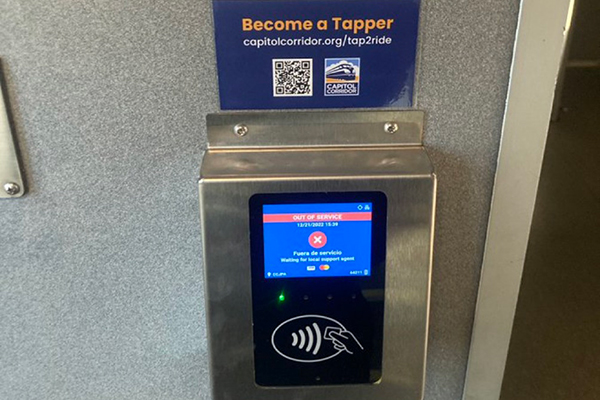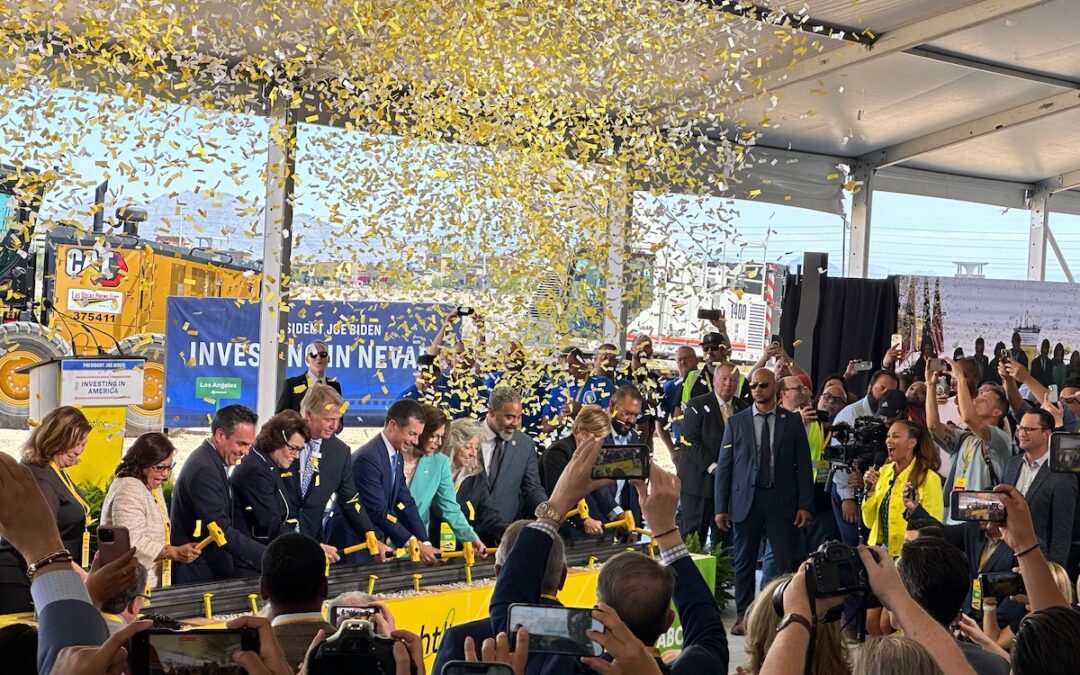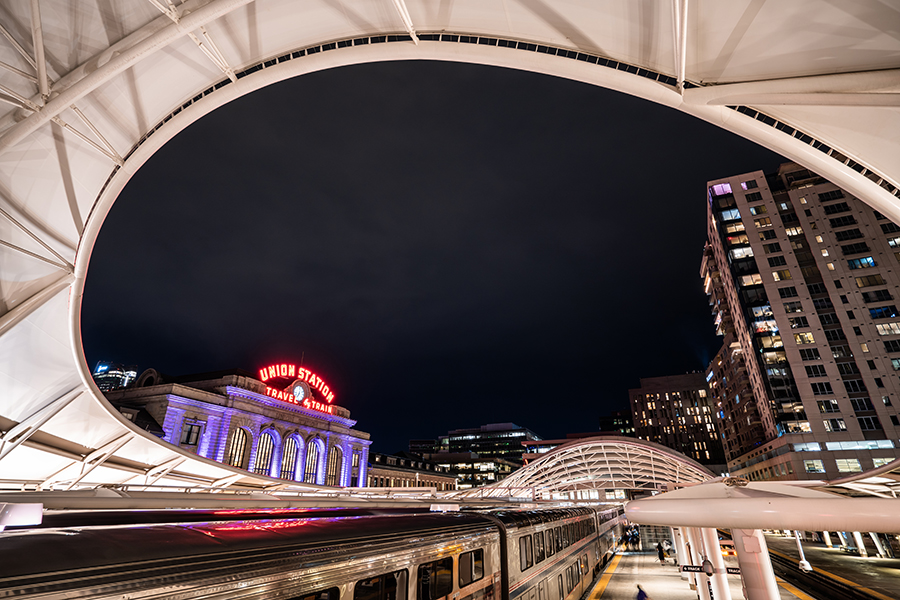The railroad Brightline today broke ground in Nevada on its new Brightline West project. Brightline will use trains traveling up to 200 miles per hour to cut the travel time between Las Vegas and Los Angeles in half. The company already operates successful trains...
Plans to boost train ridership usually focus on greater speeds, frequencies, and service areas. But California is experimenting with a tool that could be just as pivotal in convincing people to take the train.
In March 2023, the Capitol Corridor launched a pilot program that allows riders to tap their registered credit card against a scanner as they board the vehicle. The system automatically incorporates discounts and charges the correct fare to the rider’s MasterCard or Visa when they tap the scanner while exiting.
Simplicity and convenience are big advantages of the contactless payment program, called Tap2Ride. There is no ticket, so riders can board without entering their info on a website.
Cost savings are another advantage. Rides are free on a given route after the sixth ride in one week, so a commuter taking five round trips to work gets four free rides. That’s the equivalent of buying a 10-ride pass under the current system—without the hassle of buying and using a pass.
About 200 people have participated in the pilot phase of the program on the Capitol Corridor, an Amtrak line that runs from metro Sacramento to the Bay Area.
James Allison, manager of planning at the Capitol Corridor Joint Powers Authority, discussed the program in a recent Alliance webinar. Allison said that the plan is to eventually extend the technology to other California transit and bus systems while also integrating other payment modes into it—including mobile wallets, smartphones, and credit cards other than just MasterCard and Visa.
The project moves out of the pilot phase later this year, but a firm date for the broader launch hasn’t yet been set.
Tap2Ride is part of a broader initiative—the California Integrated Travel Project (or Cal-ITP)—that supports efforts to improve California’s train and transit systems through contactless fare-collection systems and improved real-time tracking data.
“The lack of a consistent experience creates barriers for new customers, complicates travel across different systems, and increases expenses for individual providers,” notes Cal-ITP, which is a joint project the California State Transportation Agency and the California Department of Transportation. Contactless fare collection “reduces operating costs for transit agencies, simplifies every traveler’s life, and simultaneously welcomes every single person in this country to a seamless, user-friendly system—making paying for a transit ride just as easy as buying coffee.”
The Capitol Corridor is the first intercity passenger-rail line in the US to experiment with contactless payment, but many transit systems across the US are adopting it as a way to bring riders back, post-pandemic. A survey by Visa found that about a third of respondents said contactless payment and fare-capping are incentives to use transit more. Meanwhile, an analysis by Discover found that customers who used its card for transit had “more frequent transactions for lower-dollar amounts, illustrating that many mass-transit riders prefer a pay-as-you-go approach to purchasing long-term passes.”
Transit ridership fell to just 20 percent of pre-pandemic levels in April 2020 but has rebounded to about about 77 percent of 2019 levels. Amtrak has returned to about 90 percent of pre-pandemic levels. In FY 2019, it had 32 million riders; it had nearly 29 million riders in FY 2023. It aims to have 66 million riders—more than double the 2019 ridership figure—by 2040.
Amtrak’s president, Roger Harris, recently said that the organization’s two objectives for 2024 are “improving passenger train service for our customers and efficiently and effectively carrying out a massive major infrastructure capital program aimed to modernize and upgrade our infrastructure, stations, fleet, and technology.”
Contactless payment could become a key element of upgrades to Amtrak lines across the nation, depending on the results of the rollout in the Capitol Corridor and, eventually, across California.
Over the next few months, the Capitol Corridor team will continue to tweak and refine the system. For example, it needs to better accommodate riders who use cash and those who are eligible for discounted fares (such as seniors, service members, and people who take part in a benefits program).
All in all, testing and rolling out Tap2Ride has been well worth the investment of time and resources. Allison believes it has stretched his organization and built its capacity like nothing else. “I’ve never done a pilot that’s been so successful in this way,” he said. “It really touched every discipline in our agency. There’s a lot to learn.”
And a lot of riders to gain.
The Latest from HSRA
Our Latest Blog Posts
Check out the latest news, updates, and high speed rail insights from our blog!




